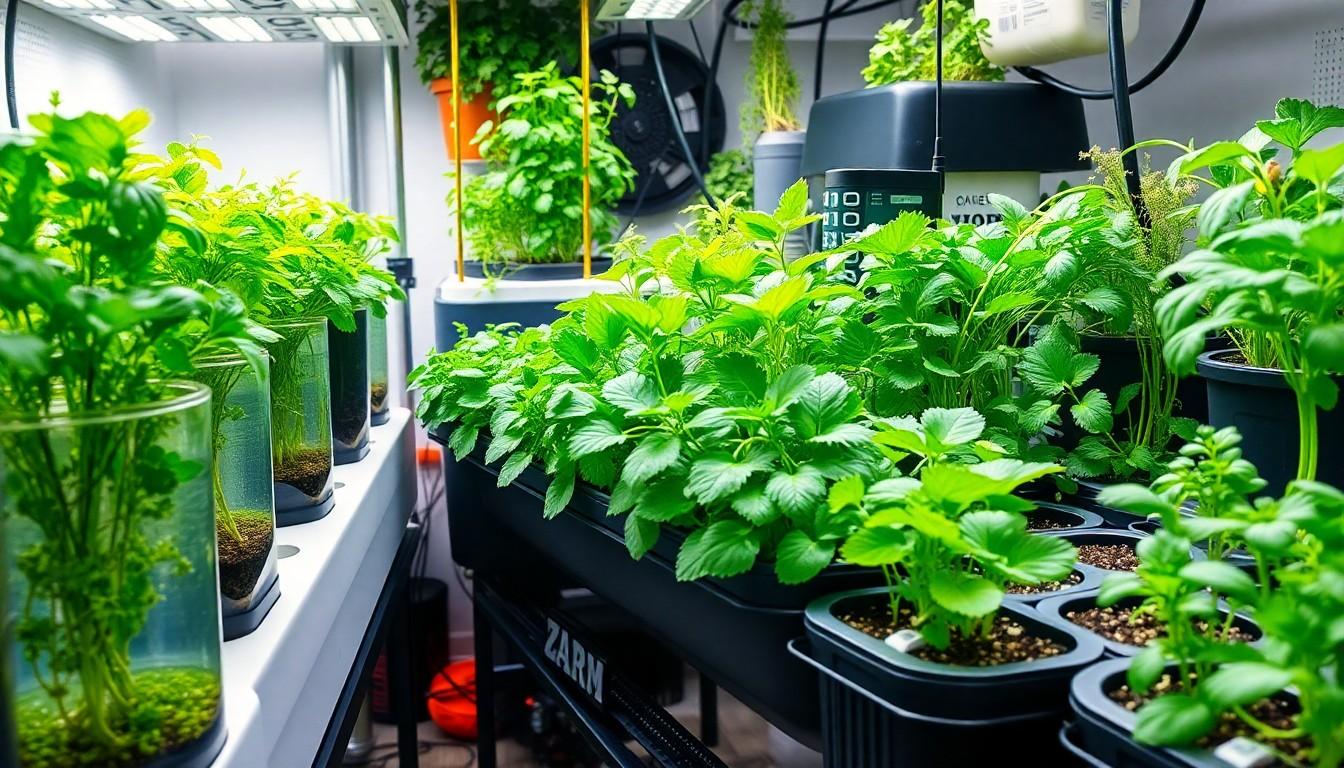Gardening doesn’t have to be all about rows of veggies and neatly trimmed hedges. It’s time to unleash creativity and transform that patch of dirt into a canvas of color and whimsy. Imagine vibrant flowers peeking out from unexpected places or quirky planters that make your neighbors do a double-take.
Creative Gardening Ideas
Creative container gardening opens new avenues for expression and functionality. Utilizing various materials and methods can transform any space into a vibrant oasis.
Upcycled Planters
Old items often find new life as planters. Consider transforming wooden crates into rustic garden beds. Metal cans add a vintage touch and provide unique shapes for small plants. Glass bottles can serve as charming hanging planters. This practice reduces waste while enhancing the garden’s visual appeal. Many people enjoy using old shoes or teacups to create whimsical displays filled with flowers. Each upcycled piece tells a story, reflecting personal style and resourcefulness.
Vertical Gardens
Vertical gardens maximize space and offer stunning aesthetics. Installing wall-mounted planters allows for fresh herbs or colorful flowers in compact areas. Hanging pots can create a cascading effect, showcasing plants at varying heights. Trellises can support climbing varieties, adding dimension to walls or fences. Small, wall-mounted grids can also organize multiple plants effectively. A vertical garden not only saves ground space but also creates living art that catches attention. Proper irrigation techniques ensure these gardens thrive beautifully.
Innovative Planting Techniques

Creative gardening embraces various innovative planting techniques. These methods enhance aesthetics and maximize space efficiently.
Hydroponics
Hydroponics involves growing plants in nutrient-rich water instead of soil. This technique allows for faster growth and higher yields compared to traditional gardening methods. Nutrients are delivered directly to the roots, promoting healthier plants. Many indoor gardeners find hydroponics ideal for limited spaces. Systems range from simple setups using containers to sophisticated, automated systems. For example, nutrient film technique systems continuously circulate water over plant roots, providing constant access to nutrients. Choosing the right plants, such as herbs and leafy greens, optimizes success in hydroponic systems.
Companion Planting
Companion planting leverages the natural relationships between various plant species. This technique promotes healthier growth and pest control through strategic plant pairings. For instance, planting tomatoes alongside basil can enhance flavor and deter pests. Successful gardeners often use marigolds to repel insects when paired with vegetables. Each pairing serves a purpose, whether for attracting beneficial insects or improving soil quality. Formulating a companion planting plan can lead to greater harvests and fewer chemicals used in gardens. Understanding plant compatibility maximizes benefits and creates a thriving garden ecosystem.
Decorative Garden Features
Decorative features can elevate a garden, making it a unique and inviting space. Incorporating various elements enhances the overall aesthetic and adds interest.
Artistic Pathways
Artistic pathways lead visitors through the garden, inviting exploration. Gravel, stone, or clover create diverse textures and guide the eye. Curvy designs soften the look, while straight lines provide structure. Add colorful tiles or mosaics for striking visual effects. Incorporating low-growing plants along the edges can soften hard surfaces, creating a natural flow. Consider including boulders or sculptural elements beside pathways for added intrigue.
Garden Art and Sculptures
Garden art and sculptures serve as focal points, enhancing visual interest. Statues, wind chimes, or abstract pieces can create a whimsical atmosphere. Using reclaimed materials for sculptures promotes sustainability while showcasing creativity. Choose pieces that reflect personal style, making the space feel more inviting. Incorporating vibrant colors or reflective surfaces draws attention and sparks conversations. Placing art strategically among plants ensures a cohesive blend, captivating guests as they wander through the garden.
Sustainable Gardening Practices
Sustainable gardening practices emphasize eco-friendly methods that conserve natural resources. Incorporating these methods enhances both garden health and environmental well-being.
Rainwater Harvesting
Rainwater harvesting captures and stores rainwater for garden use. This practice conserves water and reduces dependence on municipal supplies. Gardeners can install rain barrels beneath gutters or build cisterns for larger storage. A simple setup collects water from roofs during rainfall, providing an eco-friendly irrigation source. Utilizing rainwater lowers utility bills and promotes sustainability by reducing runoff. This approach significantly benefits gardens, especially in regions with unpredictable rainfall patterns.
Native Planting
Native planting involves selecting plants that thrive in local environments. By choosing native species, gardeners create habitats that support local wildlife, such as pollinators and birds. These plants require less maintenance, water, and fertilizers, making them ideal for sustainable gardening. Understanding the local climate and soil conditions enhances the success of native gardens. Examples of native plants include coneflower, black-eyed Susan, and ornamental grasses. Incorporating these plants not only beautifies outdoor spaces but also fosters biodiversity and resilience in the ecosystem.
Turn Your Garden Into a Captivating Oasis
Embracing creativity in gardening opens up a world of possibilities. By thinking beyond traditional methods, gardeners can transform their spaces into vibrant and unique landscapes. Incorporating upcycled materials and innovative planting techniques not only enhances aesthetics but also promotes sustainability.
Engaging with vertical gardens and hydroponics allows for efficient use of space while creating stunning visual displays. The integration of decorative features and native plants fosters a harmonious environment that supports local wildlife.
Ultimately, these creative gardening ideas inspire individuals to cultivate not just plants but also a deeper connection with nature. With a little imagination and resourcefulness, anyone can turn their garden into a captivating oasis.

